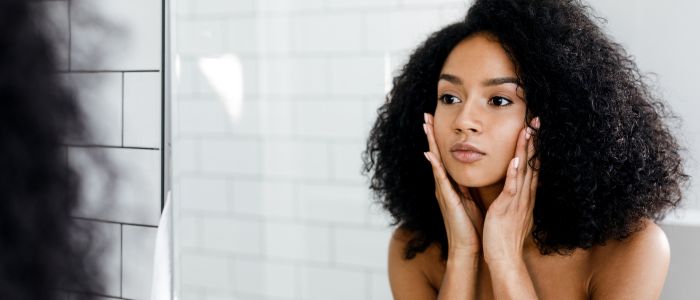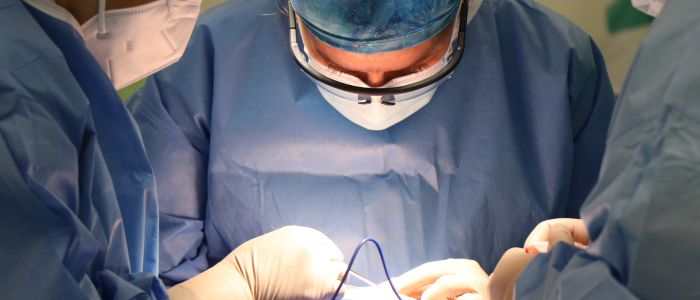
Table of Contents
- From Diagnosis to Treatment – Lumps, Bumps and Lesions Treatments
- What Are Skin Lesions?
- Common Types of Skin Lesions
- Differentiating Between Lumps and Bumps
- Identifying Skin Lumps
- When to Seek Medical Advice
- Diagnosis and Evaluation
- Treatments for Skin Lesions
- Surgical Options for Lumps and Bumps
- Non-Surgical Treatments
- FAQs about Treatments and Solutions for Lumps, Bumps & Lesions
- Further Reading about Lumps, Bumps & Lesions
From Diagnosis to Treatment – Lumps, Bumps and Lesions Treatments
Discovering an unexpected lump, bump or lesion on your body can be concerning. You may wonder if it’s a sign of something serious or simply a harmless growth. The reality is that soft-tissue masses are relatively common, with benign tumours outnumbering malignant ones by a significant margin. However, proper evaluation and accurate diagnosis are important for determining the appropriate lump treatments or lesion removal options.
In this blog, Consultant Plastic Surgeon Anca Breahna will explore the different types of lumps, bumps, and lesions, providing insights into their identification, diagnosis, and the available surgical and non-surgical treatments.
What Are Skin Lesions?
Skin lesions include moles, freckles, skin tags, cysts, blisters, and rashes. Each of these has different characteristics and potential causes. Knowing the types of lesions you have can guide you on the proper treatment options and whether medical intervention is necessary.
Common Types of Skin Lesions
- Moles are usually benign and form due to an excess of melanocytes in the skin
- Freckles are common and also benign; they typically appear as small brown spots on sun-exposed areas
- Skin tags are soft, non-cancerous skin growths that often appear on the neck, armpits, and body folds
- Cysts are non-cancerous, closed pockets of tissue that can be filled with fluid, pus, or other material
- Blisters occur from skin damage, usually due to friction or burns, and are filled with fluid
- Rashes can have various causes, including allergies and infections, and usually involve red, itchy patches on the skin
Differentiating Between Lumps and Bumps
Lumps and bumps on the skin can vary widely in terms of size, colour, and texture. They can be benign (non-cancerous) like cysts or potentially harmful like malignant tumours. Lumps are generally larger and may be caused by swelling beneath the skin or changes in tissue structure. Bumps are usually smaller, visible on the surface of the skin, and can be caused by conditions like acne or warts.
Identifying Skin Lumps
The appearance and characteristics of skin lumps, bumps, and lesions can provide valuable clues about their underlying nature and potential causes. Here’s a closer look at some common types:
- Benign Lesions: These non-cancerous growths include moles, cysts, keratoses (rough, scaly patches), and calluses. While typically harmless, it’s essential to monitor them for any changes in size, colour, or shape.
- Keloids: Keloids are raised, firm scars that extend beyond the original wound area. They are more common in individuals with darker skin tones.
- Skin Tags: These small, fleshy growths are attached to the skin by a thin stalk and often appear in areas where skin rubs together, such as the neck, armpits, or groin.
- Skin Cysts: These small, flesh-coloured sacs under the skin are filled with keratin. While usually harmless, it’s advisable to have them checked by Anca if they become red, painful, or swollen.
- Hives: Characterised by itchy, swollen welts, hives can result from allergies, infections, sun exposure, exercise, stress, or illness. They may respond to cool compresses, antihistamines, or steroids.
- Atopic Dermatitis (Eczema): This condition causes small, itchy bumps that may ooze fluid and is linked to genetics, allergies, and asthma.
- Warts: Caused by the human papillomavirus (HPV), warts are rough, raised bumps that can spread if left untreated.
- Pseudofolliculitis Barbae and Folliculitis: These inflammatory conditions are characterised by bumps and irritation resulting from shaving and bacterial infections in hair follicles, respectively.
- Acne: One of the most common skin conditions, acne can appear on the face, neck, shoulders, chest, and upper back, potentially leading to scarring or discoloration if left untreated.
- Contact Dermatitis: An itchy, red rash with distinct borders can develop when the skin comes into contact with an allergen or irritant.
It’s important to note that while some lumps and bumps may be harmless, others could indicate a more serious underlying condition. If you notice any concerning changes or experience persistent discomfort, it’s advisable to consult Anca for proper evaluation and appropriate treatment.
When to Seek Medical Advice
It is important to consult your doctor if you notice any new lumps or bumps that:
- Grow quickly or continue growing
- Are painful or become more painful over time
- Discharge fluid or blood
- Feel hard or don’t move when you push them
These could be signs of a more serious condition requiring medical intervention. Regular self-examinations can help you detect changes in your skin early, increasing the effectiveness of potential treatments.
Diagnosis and Evaluation
The initial step in diagnosing skin lumps and lesions involves a general inspection, where Anca notes the number, location, and distribution of the skin lesions. During close inspection, Anca assesses the size, configuration, colour, and morphology of the lesion(s). Palpation is used to evaluate the surface characteristics, such as texture, elevation, and temperature, as well as the deeper characteristics like consistency, fluctuance, mobility, and tenderness.
A systemic examination is performed to inspect the hands, nails, elbows, hair, scalp, and mucous membranes for relevant clinical signs. Further assessments and investigations may include:
- Obtaining swabs or skin scrapings for microbiology, virology, and fungal culture
- Performing dermatoscopy
- Conducting a skin biopsy for histological analysis
Treatments for Skin Lesions
The treatment approach for skin lesions depends on the type, severity, and underlying cause. Here are some common treatment options:
- Topical Medications: For certain lesions like actinic keratosis, warts, or psoriasis, topical creams or ointments containing medications like imiquimod, fluorouracil, or retinoids may be prescribed.
- Oral Medications: Systemic medications, such as antibiotics for bacterial infections or antiviral drugs for viral lesions like shingles, may be recommended.
- Cryotherapy: This involves freezing the lesion with liquid nitrogen, causing it to fall off. It’s commonly used for warts, precancerous lesions (actinic keratosis), and certain benign growths.
- Curettage and Cautery: In this procedure, the lesion is scraped off (curettage), and the base is cauterised (burned) to prevent regrowth. It’s effective for removing certain types of precancerous lesions and some benign growths.
- Shave Excision: The lesion is shaved off using a surgical blade, leaving a small wound to heal. This method is suitable for raised lesions like seborrheic keratoses or certain moles.
- Surgical Excision: For larger or suspicious lesions, complete surgical removal under local anaesthesia may be necessary. The excised tissue is sent for histological analysis to confirm the diagnosis.
- Steroid Injections: Injecting corticosteroids directly into the lesion can help reduce inflammation and shrink certain growths like keloids or hypertrophic scars.
- Laser or Electrodesiccation: These techniques use laser energy or electrical currents to remove or destroy lesions like warts, seborrheic keratoses, or certain precancerous growths.
- Biopsy: If skin cancer is suspected, a biopsy (removal of a sample for lab analysis) may be performed to confirm the diagnosis and guide further treatment.
The treatment choice depends on factors like the lesion’s type, size, location, and your overall health. Anca will evaluate the lesion and recommend the most appropriate and effective treatment option.
Surgical Options for Lumps and Bumps
For lumps, bumps, and lesions that require surgical intervention, there are several options available. The choice of procedure depends on factors such as the size, location, and nature of the growth.
- Excisional Surgery: This involves the complete removal of the lump or lesion, along with a margin of surrounding healthy tissue. It is often the preferred method for suspicious or potentially cancerous growths. The excised tissue is then sent for biopsy to confirm the diagnosis.
- Cryosurgery: Also known as cryotherapy, this procedure uses extreme cold (liquid nitrogen) to freeze and destroy abnormal tissue. It is frequently used for precancerous lesions like actinic keratosis and certain types of warts or skin tags.
- Electrosurgery: In this method, an electrical current is used to remove or destroy the lump or lesion. It can be effective for benign growths like moles, skin tags, or certain types of warts.
- Laser Surgery: Lasers are sometimes used to remove or vaporise lesions, particularly those that are raised or pigmented. Different laser types are chosen based on the specific characteristics of the growth.
The decision to pursue surgical intervention is made after a thorough evaluation by Anca. Proper wound care and follow-up are essential for optimal healing and monitoring after any surgical procedure.
Non-Surgical Treatments
While surgical interventions are sometimes necessary for certain types of lumps, bumps, and lesions, there are also non-surgical treatment options available. These alternatives can be effective for managing various skin conditions and may be preferred in cases where surgery is not recommended or desired.
Topical Treatments:
- Creams and Ointments: Topical medications containing ingredients like corticosteroids, retinoids, or antimicrobials can help treat conditions such as eczema, psoriasis, and certain types of skin infections.
- Cryotherapy: This involves freezing the lesion with liquid nitrogen, causing it to fall off. It’s commonly used for warts, precancerous lesions (actinic keratosis), and certain benign growths.
- Phototherapy: Exposure to specific wavelengths of light can help treat conditions like psoriasis, eczema, and vitiligo.
Injections:
- Corticosteroid Injections: Injecting corticosteroids directly into the lesion can help reduce inflammation and shrink certain growths like keloids or hypertrophic scars.
- Chemotherapy Injections: For certain types of skin cancer, chemotherapy drugs may be injected directly into the lesion to target and destroy cancerous cells.
Laser Treatments:
- Laser Therapy: Different types of lasers can be used to remove or vaporise lesions, particularly those that are raised or pigmented, such as warts, moles, or age spots.
- Photodynamic Therapy: This treatment involves the application of a light-sensitive drug followed by exposure to a specific wavelength of light, which can help destroy precancerous or cancerous cells.
Other Non-Surgical Options:
- Immunotherapy: For certain types of skin cancer, immunotherapy drugs can be used to stimulate the body’s immune system to recognise and attack cancer cells.
- Radiation Therapy: In some cases, radiation therapy may be used to treat certain types of skin cancer or other lesions that cannot be surgically removed.
The choice of non-surgical treatment depends on various factors, including the type and severity of the condition, youroverall health, and personal preferences. It’s essential to consult with Anca to determine the most appropriate and effective treatment plan.
FAQs about Treatments and Solutions for Lumps, Bumps & Lesions

What are the risks associated with treatments for lumps, bumps, and lesions?
The risks can vary significantly depending on the type of treatment. Surgical interventions might carry risks such as infection, scarring, and reactions to anaesthesia. Non-surgical methods like cryotherapy can cause skin irritation or temporary changes in skin pigment. Always consult with Anca to understand the specific risks related to your chosen treatment method.
Can over-the-counter (OTC) medications effectively treat skin lesions?
OTC medications can be useful for mild cases or as part of a larger treatment plan. Topical creams and ointments that contain corticosteroids or antibiotics may help reduce inflammation and prevent infection. However, it’s important to consult with Anca before starting any new medication to ensure it’s appropriate for your specific condition.
How can I tell if a lump or bump is cancerous?
It’s important to seek professional medical advice for an accurate diagnosis. Warning signs that might indicate a cancerous lump include rapid growth, pain, changes in colour, bleeding, or the lump being hard and immovable. A biopsy is often required to determine if a lump is malignant.
What lifestyle changes can support the healing of skin lesions?
Lifestyle changes can significantly impact the healing process. Maintaining a balanced diet rich in vitamins and minerals supports skin health. Reducing stress, avoiding excessive sun exposure, and not smoking can also help improve overall skin condition and potentially reduce the severity of lesions.
Medical References about Lumps, Bumps & Lesions
- Evaluating Soft-Tissue Lumps and Bumps – PubMed: https://pubmed.ncbi.nlm.nih.gov/20086713/
- 72 Lumps and bumps – Oxford Academic: https://academic.oup.com/book/4201/chapter/145867215
- Lumps and Bumps of the Gingiva: A Pathological Miscellany – NCBI: https://www.ncbi.nlm.nih.gov/pmc/articles/PMC4808542/
- Lumps and bumps. Common problems – Science Direct: https://www.sciencedirect.com/science/article/abs/pii/S1743919116300494
- Cysts, Lumps, Bumps, and Your Skin – WebMD: https://www.webmd.com/skin-problems-and-treatments/ss/slideshow-skin-lumps-bumps
Further Reading about Lumps, Bumps & Lesions
- Read more about Skin Cancer & Mole Surgery At Chester Cosmetic Surgery
- Read more about The Mole Guide
- Read more about Why You Should See a Plastic Surgeon for Minor Skin Surgery, Lumps and Bumps
- Read more about Birthmark Removal
- Read more about Scar Revision Surgery
- Read more about Causes and Treatment for Eczema
- Read more about Common Skin Rashes: Types, Symptoms and Solutions








